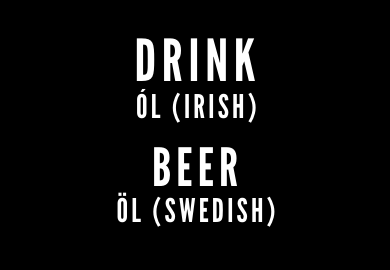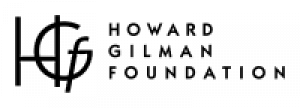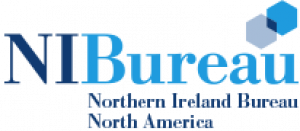Details
Contact
info@irishartscenter.org
Overview
Chapter 1
April 20-July 19, 2020
Inspired by this era of connectivity, this commissioned series featured words in Irish that sometimes sound teasingly like fairly similar words in another language, curated by Darach Ó Séaghdha of the popular @theirishfor Twitter account and Motherfoclóir Irish language podcast. The thesis is not that these words share an etymological or historical root—only that they bumped into each other and smiled, which is far more interesting.
Beginning with word seven and on through word 12, visual artist Dannielle Tegeder responds with a new work featuring found images and illustration.
July 13-19


Found image with overlay by Dannielle Tegeder. For a closer view, click the photo top left of page and scroll right.
In one of the 19th century Irish dictionaries, the entry for the word “frog” states that the amphibian was "not found in Ireland before the reign of William III of England, whose Dutch troops first introduced it amongst us.” Is this the only thing the Dutch gave Ireland?
One of the Hiberno-English words that surprises American visitors to Ireland is “gas”—that's gas, he's a gas man, and so on—meaning fun, unpredictable, and spirited. There are multiple theories about how this word caught on, one of which is based on the fact gas entered English through Dutch as a local pronunciation of the Greek word khaos—better known to Anglophones as chaos.
Maybe a "gas man” is chaotic, but are they cunning? If they were, that’d be the same in both Irish and Dutch—slim.
You might find more stories about frogs, gas men and other things on duchas.ie—this is UCD's National Folklore Collection Digitisation Project, meaning you can easily search for stories preserved from Ireland's oral tradition, in English and in Irish, using a single term that interests you.
July 6-12


Found image with overlay by Dannielle Tegeder. For a closer view, click the photo top left of page and scroll right.
One of the most famous pubs in Dublin's Temple Bar is the Turk's Head. However, this is not a reference to a citizen of Turkey: there is a wood carving in the shape of a boar's head above the door. How come? In Irish, a wild boar is a torc (pronounced "turk"), and this has trickled into place names (Kanturk in Cork) as well as Hiberno-English.
A celebratory point of Irish-Turkish friendship is the gift by Sultan Abdülmecid of £1,000 to Irish famine relief efforts in the 1840s. The story goes that he wanted to give more but did not want to cause a diplomatic incident by contributing a higher amount than Queen Victoria.
Given how much the Irish and the Turkish people cherish their languages, it's nice to know that the word for "dear" or "beloved" is the same as the Turkish for "language" or "tongue."
Since we mention Kanturk, the websites logainm.ie and placenamesni.org have searchable databases of Irish towns and villages and what the true meaning of their name is. For example, Stranmillis in Belfast means An Sruthán Milis (an sroohan millish): "the sweet stream."
June 29-July 5


Found image with overlay by Dannielle Tegeder. For a closer view, click the photo top left of page and scroll right.
If Ireland is the answer, what is the question? These opposite terms are awfully close in Swedish and in Irish: fråga is a question and freagra is an answer.
Ireland remains the all time champion of the Eurovision Song Contest, with more and bigger wins than any other competing country. However, the past two decades have seen a nosedive in Irish fortunes in this event, and it's inevitable that we will be overtaken in the next decade barring a musical miracle. Overtaken by whom? By Sweden.
While Sweden is in second place, it has won the Eurovision three times this century (while Ireland has not won since 1996). During this period, Swedish songwriter Max Martin has written more number one singles than anyone except John Lennon and Paul MCCartney.
If you are interested in both pop music and the Irish language, then Raidio Na Life, Dublin's volunteer-run Irish language station, might be right for you. There's a range of accessible shows which can be enjoyed live or through podcast at raidionalife.ie.
June 22-28


Found image with overlay by Dannielle Tegeder. For a closer view, click the photo top left of page and scroll right.
The Hindi word for a star, tara, is a popular name for girls in Ireland, being the name of the capital of Gaelic Ireland in the days of high kings. But tara is not an Irish word but the anglicisation of teamhair, meaning a hill or higher land. Even so, you’ll still see an Irish woman called Tara with a star tattoo sometimes.
Speaking of land, it is sadly poetic that the Irish word for "country" sounds like the English for what is shed when you are sad, as the pursuit of land and conflicts between countries has led to many tears. BUT tír sounds like words in other languages as well, including the Hindi for "shore" or "coastline."
The Indo-European heritage shared by the Irish and Hindi languages goes so far back in time that few links or similarities from that period remain. However, there have been plenty of connections more recent than that—the only statue in St. Stephen’s Green of a person from outside Ireland is of Rabindranath Tagore, Nobel laureate and composer of the Indian national anthem.
If stars, planets, and heavenly bodies interest you, you will enjoy this series of illustrations by the Irish artist Ciaran Duffy.
June 15-21


Found image with overlay by Dannielle Tegeder. For a closer view, click the photo top left of page and scroll right.
Sometimes an acronym or an initialism catches on to the point that what the words actually stand for can be widely forgotten, like UNICEF, RADAR, or GIF. This is certainly true of laser, which stands for “light amplification by stimulated emission of radiation.” When translating such acronyms, do we follow the sound of the word everyone knows, or do we create a new one with the starting letters of the constituent words in the new language?
As it happens, the Irish for a flame, lasair, sounds a lot like the English word laser (which was coined many centuries later). In the introduction of the Irish science fiction anthology A Brilliant Void, Jack Fennell writes about how Irish mythology contained many elements that anticipated sci-fi, such as Balor’s being able to shoot a fiery beam of energy from his evil eye. Was this beam a lasair or a laser?
A source of bilingual content that is suitable for learners without being explicitly educational in tone isZín Two Tongues by Clodagh McGinley. Each issue includes a bilingual interview, an Irish language interview, poetry or short fiction, and a glossary.
June 8-14
Intermission
June 1-7


Found image with overlay by Dannielle Tegeder. For a closer view, click the photo top left of page and scroll right.
Once upon a time, the only connection between Ireland and Eastern Europe was the novel Dracula. But since the expansion of the European Union in 2004, Ireland welcomed significant migration from the eastern accession states, making an immediate contribution to Irish life. The Estonian community in Ireland is one of the smallest of these communities, numbering around 3,000.
Estonian is not part of the Indo-European family of languages, and has an entirely different history to Irish. So the fact that the Irish for “other,” eile, is spelled like the Estonian for “yesterday” is just a curiosity for programmers working on language recognition software* to worry about.
We are now halfway through our Irish Words of the Week with @theirishfor and from now until the end of the series, will be sharing each new word with a visual response from the artist Dannielle Tegeder. Here is her found image of the Gweedore, Co. Donegal of yesterday, with overlay.
*Speaking of software, programming languages based on Irish are becoming available to people who are so interested, including Setanta and Aireamhan.
May 25-31

Every spring, the Scottish Poetry Library publishes its Best Scottish Poems anthology for the previous year. Its 2019 edition, released last week, is the first to include works in Scotland’s three language—English Lowland Scots (the tongue of its greatest bard, Robert Burns) and Scots Gaelic.
Scots Gaelic is the closest language to Irish in the world, with thousands of words shared or mutually intelligible between them. But there are little differences. The most obvious one is that the fadas point in different directions; Irish fadas rise to the right, Scots Gaelic ones towards the left. Another difference is that some words have evolved over time to have different meanings. An example of this is ùrlar (Scots Gaelic) and urlár (Irish). Both of these words mean a lower horizontal surface but the Irish one more typically refers specifically the floor of a structure; the Scots Gaelic term also means the soil or outdoor ground (ùir means earth or soil).
You won’t mix up Irish and Scots Gaelic if you sign up for Dublin City University’s online Irish course, which is free and pitched at beginners. You can find out more here.
May 18-24

Genome-sequencing research on remains found in Bronze Age burial sites in Ireland has added evidence to the theory that ancient Ireland experienced significant inward migration from the Middle East. Could this movement of people have led to a transfer of words and ideas that have survived millennia? If this is true, one contender for a link could be the similar words for “knife” in Arabic and Irish, words that are distinct from the equivalent terms in these languages’ immediate neighbors (“knife” in English and “couteau” in French, for example).
If you enjoy Instagram and want to find some Irish-language content there, @muinteoirmeg (Meg the Teacher) shares short clips in which the vocabulary she uses (and its translation into English) pops up onscreen as she discusses fashion, food, and much more.
May 11-17

Irish visitors to Vietnam get a surprise when they see that the Vietnamese word for beef is the same as the Irish word for a cow. It’s likely that both of these came from the French word boeuf (meaning beef or an ox) at different times: into Irish via the Normans in the twelfth century and into Vietnamese during the “Indochine Française” colonial era in the nineteenth and early twentieth centuries.
When languages carry different words for an animal and the meat that it produces, it generally reflects the social differences between those who prepare the food and those who get to eat it. This is the case in English (sheep vs. mutton, deer vs. venison) and in Irish (bó is a cow, mairteoil is beef).
If you are reading a piece of online text in Irish and want to know how it is pronounced, you can copy it into abair.tcd.ie/ga. This website, run by the School of Linguistic, Speech and Communication Sciences at Trinity College Dublin, will then read the text aloud in the dialect you prefer.
May 4-10

This is pronounced “shun-noch.” Sometimes in Ireland a fox is also called a madra rua, which means a red-haired dog. This can leave red setters and silver foxes feeling very excluded, and possibly Russian puppies, too. The Russian and Irish words for “four,” ceathair and cethire, also sound similar.
While the Russian and Irish languages are very different, the modernization of Irish spelling and alphabet in the mid-20th century was influenced by the success of such changes in the Russian language in 1918. However, if you are a fan of the older Irish script with the ponc séimhithe and elegant lowercase “s,” you can still see that in Dinneen’s Dictionary. Every home should have one, but there’s an online version here.
April 27-May 3

This rhymes with "hole" and is the verb in Irish to describe the act of drinking. And what might one drink? Whatever you’re having yourself, but it just so happens that the Swedish word for beer sounds the same.
Ireland experienced Viking invasions from the eighth century onwards, founding towns such as Dublin and Waterford. This period led to the Irish language acquiring many loan words from Norse, including pingin (a penny), cnaipe (a button) and ispín (a sausage).
If you are interested in older forms of Irish you can learn more at dil.ie/concise. This is the Royal Irish Academy’s Dictionary of Old and Middle Irish, and the concise version of the entry above is aimed at general readers.
April 20-26

Pronounced "dee-nah," it's the Irish word for people—any kind of people at all. In the Navajo language, it means the Navajo people specifically. While it is unlikely that the word transferred from one community to the other, it's nice to know that ideas can rhyme, even when thousands of miles apart.
You can discover more Irish words—with audio clips on how to pronounce them in the three major dialects—on focloir.ie, an online English to Irish dictionary. The letters CMU are beside thousands of entries—just click on C for how it sounds in Connacht Irish, M for Munster Irish and U for Ulster Irish.

























